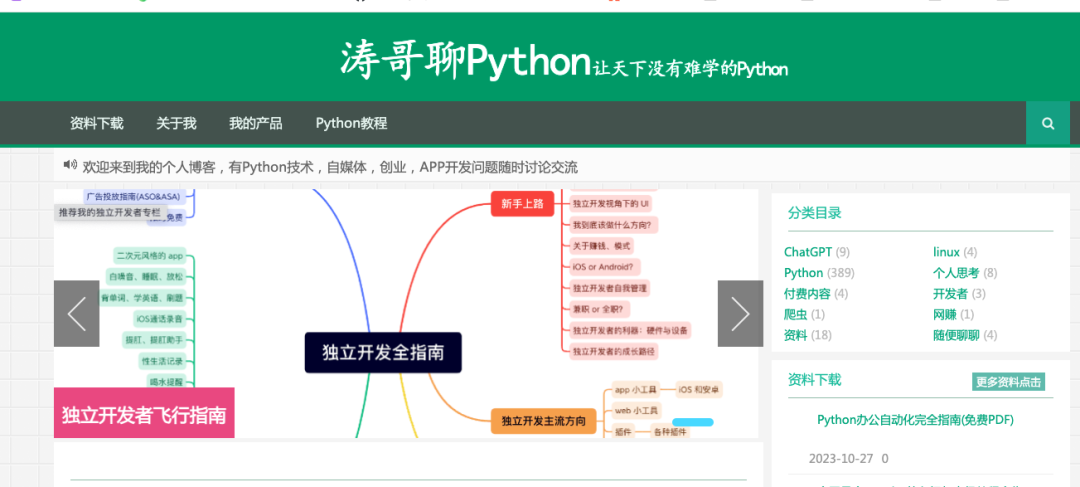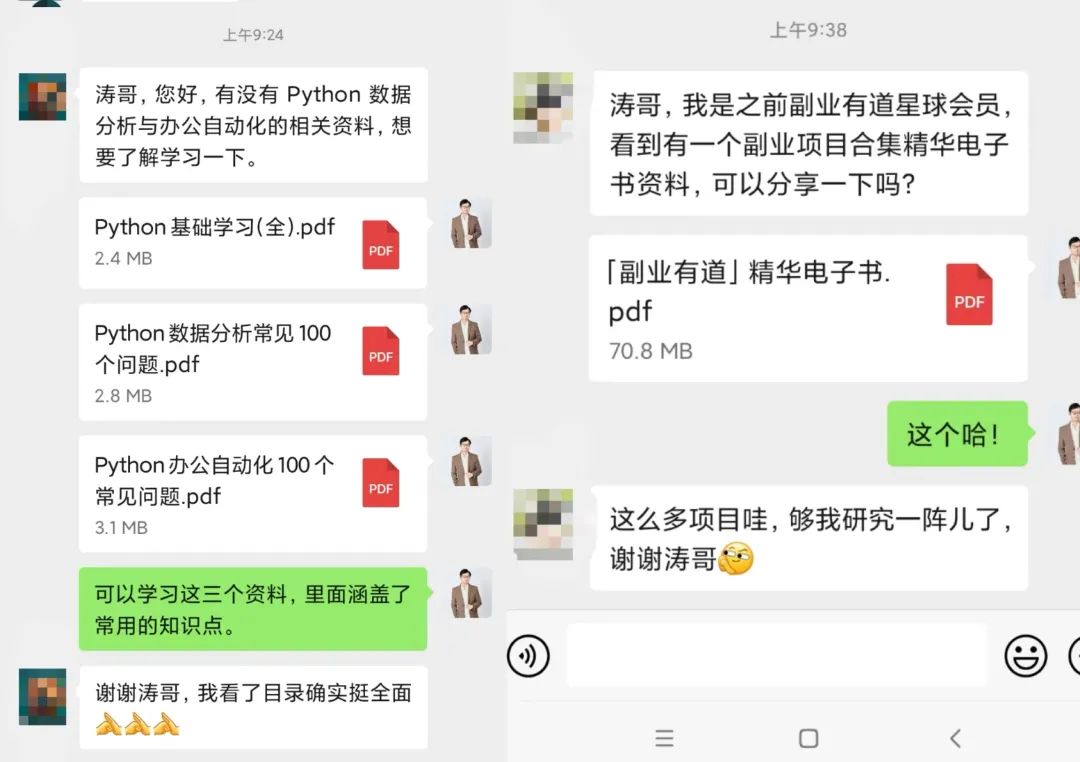
更多python学习内容:ipengtao.com
大家好,今天为大家分享一个超强的 python 库 - cuml。
github地址:https://github.com/rapidsai/cuml
在大数据和机器学习的时代,高效的数据处理和模型训练变得尤为重要。传统的 cpu 计算方式在处理大规模数据时往往显得力不从心,而 gpu 的并行计算能力为此提供了一种解决方案。cuml 是 rapids ai 项目的一部分,它提供了一组基于 gpu 的机器学习算法,能够极大地提升数据处理和模型训练的效率。本文将详细介绍 cuml 库,包括其安装方法、主要特性、基本和高级功能,以及实际应用场景,帮助全面了解并掌握该库的使用。
安装
要使用 cuml 库,首先需要安装 cuda 和 cuml。
以下是安装步骤:
-
安装 cuda:确保系统上安装了正确版本的 cuda(建议 10.0 或以上)。可以从 nvidia 官网 下载并安装 cuda toolkit。
-
安装 cuml:可以通过
conda或pip安装cuml库。推荐使用conda进行安装,因为它会自动处理依赖项。
conda install -c rapidsai -c nvidia -c conda-forge cuml=21.06 python=3.8 cudatoolkit=11.0安装完成后,可以通过导入 cuml 库来验证是否安装成功:
import cuml
print("cuml 库安装成功!")特性
-
基于 gpu 加速:利用 gpu 的并行计算能力,大幅提升数据处理和模型训练速度。
-
与 scikit-learn 兼容:提供与 scikit-learn 类似的 api,降低学习成本,便于用户迁移和使用。
-
多种机器学习算法:支持回归、分类、聚类、降维等多种机器学习算法。
-
集成 rapids 生态系统:与 rapids 其他库(如 cudf、cugraph)无缝集成,提供完整的数据科学解决方案。
-
高效的内存管理:通过优化的内存使用,减少内存占用,提高计算效率。
基本功能
导入库和数据集
import cuml
import cudf
import numpy as np
# 生成示例数据
x = np.random.rand(100, 10)
y = np.random.rand(100)
# 转换为 cudf dataframe
x_cudf = cudf.dataframe.from_records(x)
y_cudf = cudf.series(y)线性回归
使用 cuml 库,可以方便地进行线性回归模型的训练和预测。
from cuml.linear_model import linearregression
# 创建和训练线性回归模型
model = linearregression()
model.fit(x_cudf, y_cudf)
# 进行预测
predictions = model.predict(x_cudf)
print("线性回归预测结果:", predictions)k-means 聚类
cuml 库支持 k-means 聚类算法。
from cuml.cluster import kmeans
# 创建和训练 k-means 模型
kmeans = kmeans(n_clusters=3)
kmeans.fit(x_cudf)
# 获取聚类结果
labels = kmeans.predict(x_cudf)
print("k-means 聚类结果:", labels)高级功能
随机森林
cuml 库支持随机森林算法。
from cuml.ensemble import randomforestregressor
# 创建和训练随机森林模型
rf_model = randomforestregressor(n_estimators=100)
rf_model.fit(x_cudf, y_cudf)
# 进行预测
rf_predictions = rf_model.predict(x_cudf)
print("随机森林预测结果:", rf_predictions)主成分分析(pca)
cuml 库支持主成分分析,用于降维。
from cuml.decomposition import pca
# 创建和训练 pca 模型
pca = pca(n_components=2)
pca_transformed = pca.fit_transform(x_cudf)
print("pca 降维结果:", pca_transformed)t-sne
cuml 库支持 t-sne 算法,用于高维数据的可视化。
from cuml.manifold import tsne
# 创建和训练 t-sne 模型
tsne = tsne(n_components=2)
tsne_transformed = tsne.fit_transform(x_cudf)
print("t-sne 降维结果:", tsne_transformed)实际应用场景
金融市场预测
在金融市场中,快速分析和预测股票价格是一个常见的应用。
import pandas as pd
import yfinance as yf
# 获取股票数据
data = yf.download('aapl', start='2020-01-01', end='2021-01-01')
data.reset_index(inplace=true)
# 准备特征和目标变量
x = data[['open', 'high', 'low', 'volume']].values
y = data['close'].values
# 转换为 cudf dataframe
x_cudf = cudf.dataframe.from_records(x)
y_cudf = cudf.series(y)
# 创建和训练线性回归模型
model = linearregression()
model.fit(x_cudf, y_cudf)
# 进行预测
predictions = model.predict(x_cudf)
print("股票价格预测结果:", predictions)客户细分
在市场营销中,客户细分是一个重要任务。
# 生成示例客户数据
customers = np.random.rand(1000, 5)
# 转换为 cudf dataframe
customers_cudf = cudf.dataframe.from_records(customers)
# 创建和训练 k-means 模型
kmeans = kmeans(n_clusters=5)
kmeans.fit(customers_cudf)
# 获取聚类结果
labels = kmeans.predict(customers_cudf)
print("客户细分结果:", labels)图像处理
在图像处理和计算机视觉中,使用 pca 或 t-sne 进行图像特征降维和可视化是常见任务。
from sklearn.datasets import load_digits
# 加载手写数字数据集
digits = load_digits()
x = digits.data
# 转换为 cudf dataframe
x_cudf = cudf.dataframe.from_records(x)
# 使用 t-sne 进行降维
tsne = tsne(n_components=2)
tsne_transformed = tsne.fit_transform(x_cudf)
# 可视化降维结果
import matplotlib.pyplot as plt
plt.scatter(tsne_transformed[:, 0].to_array(), tsne_transformed[:, 1].to_array(), c=digits.target)
plt.colorbar()
plt.show()总结
cuml 库是一个功能强大且易于使用的 gpu 加速机器学习库,能够帮助开发者在大规模数据处理和模型训练中显著提高效率。通过支持多种机器学习算法、与 scikit-learn 兼容、丰富的高级功能和高效的内存管理,cuml 库能够满足各种复杂的数据科学需求。本文详细介绍了 cuml 库的安装方法、主要特性、基本和高级功能,以及实际应用场景。希望本文能帮助大家全面掌握 cuml 库的使用,并在实际项目中发挥其优势。
如果你觉得文章还不错,请大家 点赞、分享、留言 下,因为这将是我持续输出更多优质文章的最强动力!
如果想要系统学习python、python问题咨询,或者考虑做一些工作以外的副业,都可以扫描二维码添加微信,围观朋友圈一起交流学习。

我们还为大家准备了python资料和副业项目合集,感兴趣的小伙伴快来找我领取一起交流学习哦!

往期推荐
历时一个月整理的 python 爬虫学习手册全集pdf(免费开放下载)
学习 数据结构与算法,这是我见过最友好的教程!(pdf免费下载)





发表评论